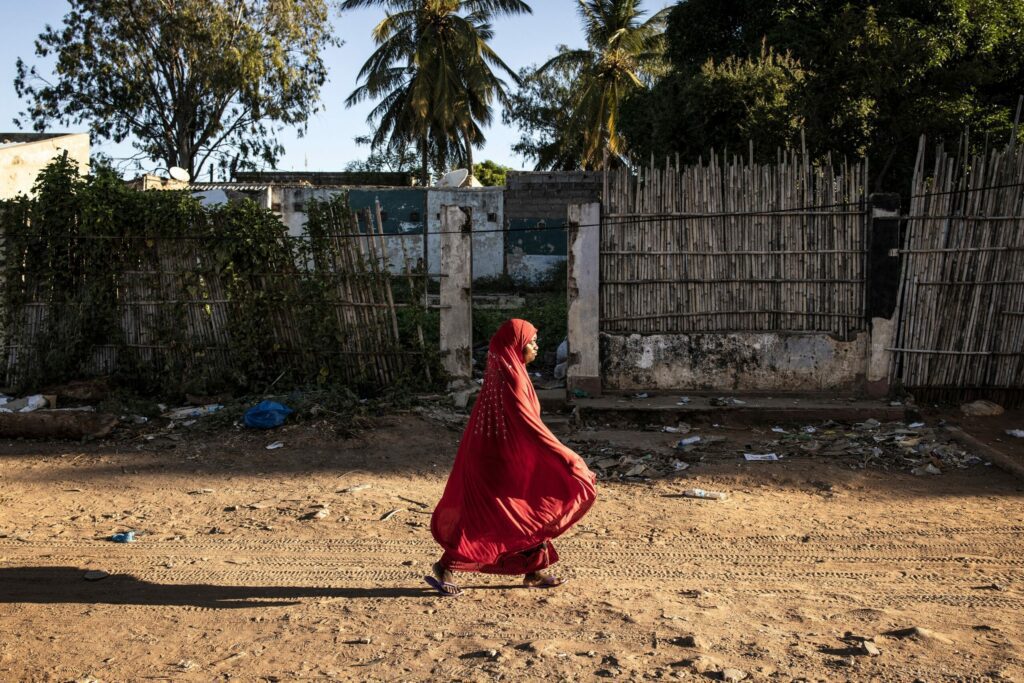A displaced woman in central Mozambique held up a corn stalk, shriveled from heat and too much sun. She shuffled toward my colleague in sandy, dry soil and said, “you can have it if you want. It’s of no use to me.” In an area that is supposed to have largely recovered from devastating cyclones, many displaced people are still struggling to eke out a living. They are located inland in settlements far from their fishing villages, and are now trying to survive as farmers—in blistering heat and with little to no farming experience. Yet without support to learn this new vocation in a changing climate, many are facing hunger, and find themselves unable to support their families.
Mozambique’s stunning coastline and fertile inland have increasingly been ravaged by cyclones and other tropical storms, which have grown in both number and intensity due to climate change. The World Bank estimates that climate change could push upwards of 1.6 million additional Mozambicans into poverty by 2050. Cyclone Idai, which hit in 2019, left people dangling in trees for days as waters surged and family members were swept away. Those who managed to survive walked for days without food or water. Even as aid was mobilized, it could not match the devastation many in the area faced. Just six weeks later, Mozambique was hit yet again by Cyclone Kenneth, which caused further devastation. In 2023, Cyclone Freddy, measured as one of the deadliest worldwide, hit Mozambique twice – first in February, and then in mid-March – and killed nearly 200 people.
Today, Mozambique’s central province of Sofala and its second-largest city, Beira, have returned to normal in many ways. The local, regional, and national governments learned from the storm, and have adopted some safeguards, including early warning systems, local disaster preparedness, and even cyclone insurance. In some instances, authorities have helped or required communities to relocate. But some more than 850,000 people remain displaced and may never be able to return home. Most aid groups have pulled out or reduced their presence. Many people are still in desperate conditions, and additional aid and development efforts must be tailored to help them survive, and begin to thrive.
Internally displaced people (IDPs) living in Guara Guara site – a couple hours drive inland from the larger city of Beira – were relocated by the government from coastal areas. While understandable, these relocation efforts have made it difficult for people to support themselves. Many relocation sites are far from people’s homes, and life has proven a constant struggle in these areas. On a recent visit to Mozambique, Refugees International met with IDPs who were uncertain where their next meal was coming from, and who had little access to healthcare or education. While some had returned or integrated into other communities, many still lived in makeshift homes with no clarity of what their future might hold.
Their stories suggested a disconnect between what aid actors were delivering and what communities felt they needed. Relief groups were helping IDPs to get back on their feet – for example, by providing land, or in some cases, permanent housing. However, these services may not be enough, and may not be in step with what the population wants. They face the difficult choice of staying and trying to make a living on farmland that is not very fertile, or going back to their risk-prone homes to fish until the next round of flooding or disaster strikes.
The government of Mozambique is the first actor responsible for helping people adapt to these realities, and the National Adaptation Plan – the country’s strategy to respond to the changing climate – is the starting point for addressing these issues. Aid and development groups are also well-aware of the risks of mismatched assistance, as demonstrated by cases where seeds or other assistance is given to those who might not be able to make use of it. They emphasize the need to do careful surveys and assessments to ensure that aid is effective. But aid actors are also limited in what they can do. Reduced aid budgets limit progress, and there is pressure to shift resources to the north of the country where conflict-related displacement is growing in light of attacks on civilians. To get the response right, aid actors must engage early and often with the displaced population and local communities as they design and implement their programs. Livelihood programming must also be a priority from the start to help populations from one sector, such as fishing, rebuild their lives by working in an entirely different sector, such as agriculture. Vocational training can play a key role. In addition, relocation efforts should also strive to keep communities closer to their place of origin, and to have greater participatory decision-making in relocation destinations.
While not a panacea, close consultation with local communities, and further engagement with displaced people in the design and implementation of any and all livelihood activities will improve the overall response and rebuilding — both in Mozambique and in countries facing the dual challenges of displacement and climate threats globally.
Featured image: A woman walks along a street in Pemba on May 25, 2021. Photo by John Wessels/AFP via Getty Images.
Source link : https://www.refugeesinternational.org/perspectives-and-commentaries/making-fishers-into-farmers-mozambiques-idps-need-livelihood-support/
Author :
Publish date : 2024-06-20 23:43:01
Copyright for syndicated content belongs to the linked Source.
